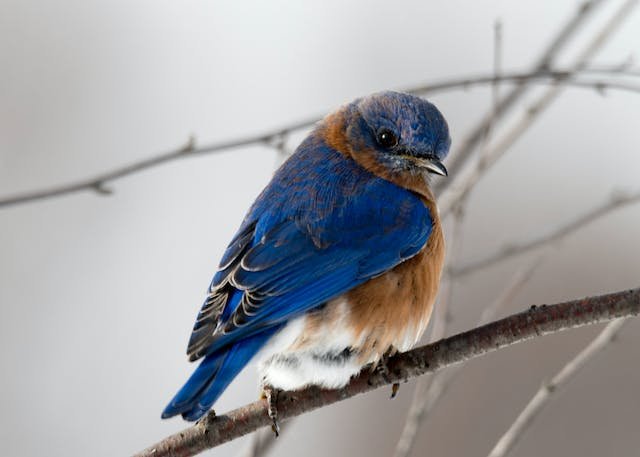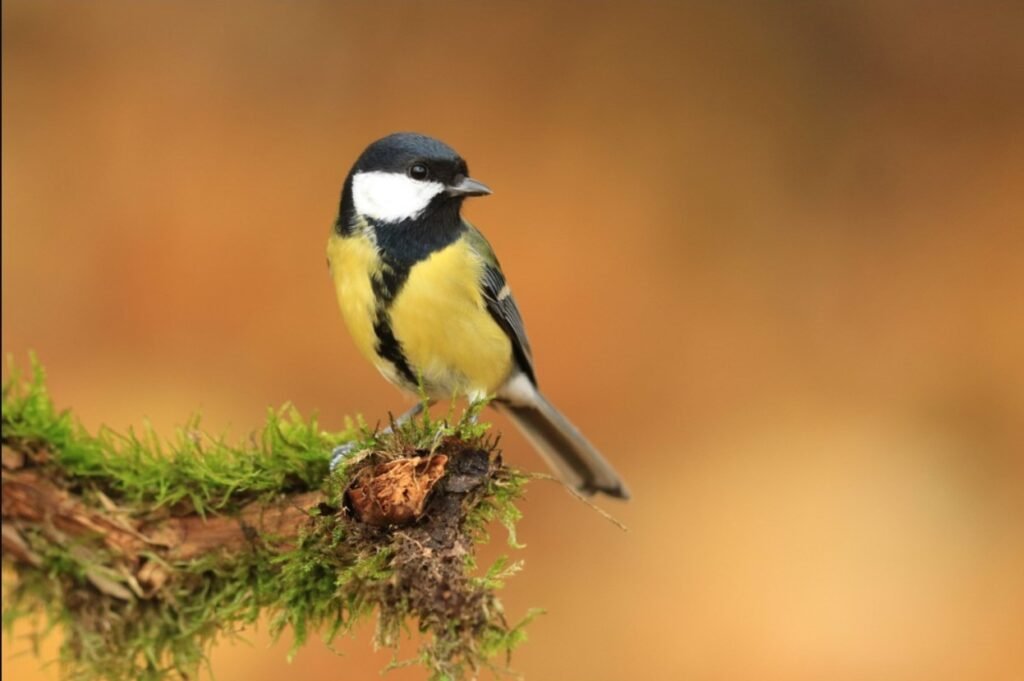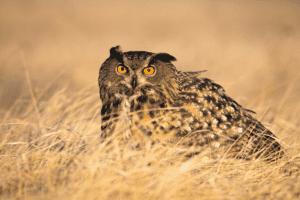Have you ever wondered that What Causes Blindness In Birds? Bird blindness, also known as avian vision loss, refers to the condition in which birds experience partial or complete loss of vision. This can occur due to various factors, including genetic mutations, infections, injuries, or exposure to toxins.
Bird blindness can have a significant impact on a bird’s ability to navigate its environment, find food, and avoid predators. Understanding the causes of bird blindness is crucial for developing strategies to prevent and treat this condition in avian populations.
Table of Contents
Common symptoms of blindness in birds
Blindness in birds can be identified through various symptoms. One common symptom is the inability to navigate their surroundings properly. Blind birds may frequently bump into objects or have difficulty finding their food and water. Another symptom is the lack of response to visual stimuli.
Blind birds may not react to movements or changes in their environment. Additionally, blind birds may display abnormal behaviors such as excessive vocalization or aggression. It is important to observe these symptoms and seek veterinary care for proper diagnosis and treatment.
What Causes Blindness In Birds?

Causes of Blindness in Birds are given below:
1.Inherited genetic mutations
Blindness in birds can be caused by inherited genetic mutations. These mutations affect the development and function of the bird’s eyes, leading to various degrees of visual impairment or complete blindness. In some cases, these mutations may be passed down from parent birds to their offspring, resulting in a higher likelihood of blindness within certain bird populations.
Understanding the genetic basis of blindness in birds is crucial for conservation efforts and the development of targeted treatments or interventions to prevent or mitigate the impact of this condition.
2. Genetic disorders affecting vision
Genetic disorders can play a significant role in causing blindness in birds. These disorders can affect the development and function of the visual system, leading to impaired vision or complete blindness. In some cases, specific genes responsible for vision may be mutated or missing, resulting in the loss of visual acuity.
Other genetic disorders may affect the structure or function of the eyes, leading to abnormalities that impair vision. Understanding and identifying these genetic disorders is crucial for developing effective treatments and interventions to prevent blindness in birds.
3. Role of selective breeding in genetic blindness

Selective breeding plays a significant role in the development and propagation of genetic blindness in birds. Breeders often focus on specific traits, such as feather color or size, and unintentionally select for genetic mutations that result in blindness. Over time, these mutations can become more prevalent within a population, leading to a higher incidence of blindness.
Additionally, the limited gene pool within breeding populations can increase the likelihood of inheriting and passing on these genetic mutations. Therefore, it is crucial for breeders to consider the potential consequences of selective breeding on the overall health and well-being of birds, including the risk of genetic blindness.
4. Impact of pollution on bird vision
Pollution has been found to have a significant impact on bird vision, leading to an increased risk of blindness. Birds are highly susceptible to the harmful effects of air and water pollution, which can result in the accumulation of toxic substances in their bodies. These pollutants, such as heavy metals and chemicals, can directly damage the delicate structures of the eyes, impairing their ability to see.
Additionally, pollution can also lead to a decrease in the availability of food sources for birds, further exacerbating the risk of blindness. The detrimental effects of pollution on bird vision highlight the urgent need for environmental conservation and the implementation of measures to reduce pollution levels.
5. Effects of habitat loss on visual health

Habitat loss has significant effects on the visual health of birds, leading to an increased risk of blindness. When birds lose their natural habitats due to deforestation, urbanization, or other human activities, they are exposed to various threats that can impair their vision. The loss of suitable nesting sites and food sources can disrupt their visual development and lead to malnutrition, which can further weaken their eyesight.
Additionally, habitat loss often results in increased exposure to pollutants and environmental hazards, such as pesticides and industrial waste, which can cause eye damage and blindness in birds. Therefore, it is crucial to protect and preserve bird habitats to ensure their visual health and prevent the occurrence of blindness.
6. Exposure to harmful chemicals and toxins
Birds can also experience blindness as a result of exposure to harmful chemicals and toxins. These substances, such as pesticides, heavy metals, and industrial pollutants, can enter the birds’ system through various routes, including ingestion, inhalation, and dermal contact. Once inside the body, these chemicals can cause damage to the birds’ visual system, leading to vision impairment or complete blindness.
Additionally, some toxins can accumulate in the birds’ tissues over time, resulting in long-term and irreversible damage. It is crucial to minimize the use of harmful chemicals and toxins in the environment to protect the visual health of birds and other wildlife.
7. Viral and bacterial infections affecting vision
Birds can experience vision problems as a result of viral and bacterial infections. These infections can affect different parts of the eye, including the cornea, conjunctiva, and retina. Viral infections, such as avian influenza and Newcastle disease, can cause inflammation and damage to the eye tissues, leading to impaired vision or even blindness.
Bacterial infections, such as avian mycoplasmosis and chlamydiosis, can also affect the eyes, causing symptoms like redness, discharge, and swelling. It is important for bird owners and enthusiasts to be aware of these infections and take necessary precautions to prevent their spread and protect the birds’ vision.
8. Parasitic diseases and their impact on bird eyesight

Parasitic diseases can have a significant impact on the eyesight of birds. These diseases are caused by various parasites, such as mites, ticks, and worms, that infest the bird’s body and affect their visual system. The parasites can damage the bird’s eyes directly, leading to inflammation, irritation, and even blindness.
The parasites can also weaken the bird’s immune system, making them more susceptible to other eye-related infections and diseases. Therefore, it is crucial for bird owners and wildlife conservationists to take preventive measures and provide appropriate medical treatment to protect birds from the harmful effects of parasitic diseases on their eyesight.
9. Collisions with man-made structures
Collisions with man-made structures are one of the leading causes of blindness in birds. As cities expand and more buildings, power lines, and communication towers are constructed, birds often collide with these structures while flying. The impact from these collisions can cause severe injuries to their eyes, leading to partial or complete blindness.
Reflective surfaces on buildings and windows can confuse birds, causing them to fly into the glass and injure their eyes. To mitigate the risk of blindness in birds, efforts should be made to design buildings and structures that are bird-friendly, such as using bird-safe glass and implementing measures to reduce collision risks.
10. Predator attacks and injuries

Predator attacks and injuries are one of the major causes of blindness in birds. Birds are often targeted by predators such as hawks, owls, and cats, which can cause severe injuries to their eyes. The sharp talons and beaks of these predators can puncture the eyes or cause other damage that leads to blindness.
Additionally, birds that survive predator attacks may develop infections or other complications that can further impair their vision. Therefore, predator attacks and injuries are a significant threat to the eyesight of birds.
Conclusion
The need for further research
Blindness in birds is a complex and intriguing phenomenon that requires further investigation. Although there have been some studies on the causes of blindness in birds, there is still much that is not known. Understanding the underlying factors that contribute to this condition is crucial for developing effective prevention and treatment strategies.
Conservation efforts to protect bird populations
Conservation efforts play a crucial role in protecting bird populations and preventing blindness in birds. One of the key strategies is the preservation of natural habitats, such as wetlands and forests, which provide essential resources for birds to thrive.
Promoting awareness and education about bird blindness
Bird blindness is a serious issue that affects the vision of many bird species. It is caused by various factors, including genetic mutations, diseases, and environmental hazards. To address this problem, it is crucial to promote awareness and education about bird blindness. By educating the public about the causes and effects of bird blindness, we can encourage people to take necessary precautions to protect birds and their habitats.
Read Also: Do Birds Need Vaccines?





